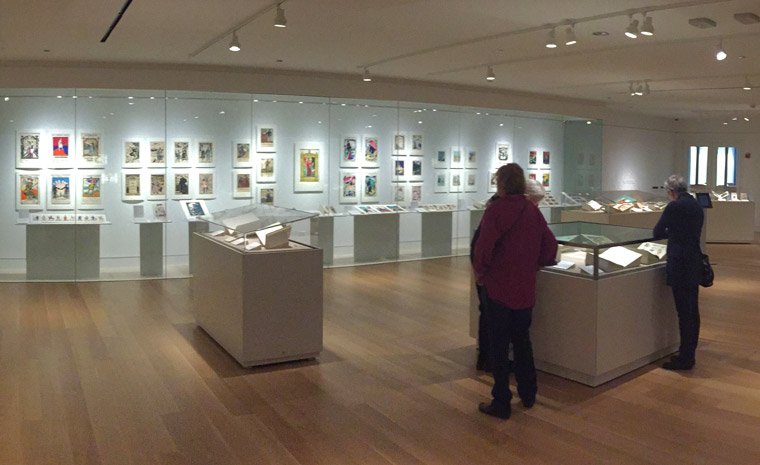At the Sign of the Unicorn
Few people owned books for personal use in medieval and early modern Europe. If a household owned a book at all, it was likely to be a book to guide devotion, such as a book of hours. Books of hours were typically copied by a scribe and decorated by an illuminator, and many contain detailed paintings and decorated borders. Thousands of hand-copied, or manuscript, books of hours are preserved in museums and libraries today. Printed examples survive, too. Thielman Kerver established a printing house at the Hotel Unicorn in Paris in the late fifteenth century and distinguished the business by producing high-quality and elaborately decorated books of hours, which sold well. Kerver’s wife, Yolande Bonhomme, took over the printing house after his death and continued producing popular books of hours, such as the 1549 example in this case, which is among the earliest books in the Library’s collections printed by a woman and signed with her name in the colophon.
Hore intemerate dei genitricis Virginis Marie secu[n]dum usum Romanum
Paris: Thielman Kerver, 1507
BX2080.C38 1507
Rare Books Collection
Gift of the Joseph and Helen Regenstein Rare Book Fund
Thielman Kerver printed this book of hours in Paris in 1507. The work is striking for its ornate metalcut borders and elaborate narrative engravings. It is printed on parchment leaves made from the skin of a goat or calf that are more resistant to ink than is paper. Kerver began printing in Paris in 1497 and established his printing house at the Hotel Unicorn, situated on the Rue St. Jacques in the center of Paris’ printing district. Kerver’s distinctive printing device depicts two unicorns bearing arms beneath an oak tree. His partner and widow Yolande Bonhomme continued using the device when she took over the business upon Kerver’s death in 1522. See an example of Bonhomme’s work to the right and compare the devices.

